Is Barbie Retro Garden Party Doll 11.5 Inches?
11 Barbie Doll Controversies You Completely Forgot About
Despite the huge popularity of this iconic toy, Barbie has sparked her share of debate since she first hit the market 60 years ago. Here are some of the biggies.
Every editorial product is independently selected, though we may be compensated or receive an affiliate commission if you buy something through our links. Ratings and prices are accurate and items are in stock as of time of publication.
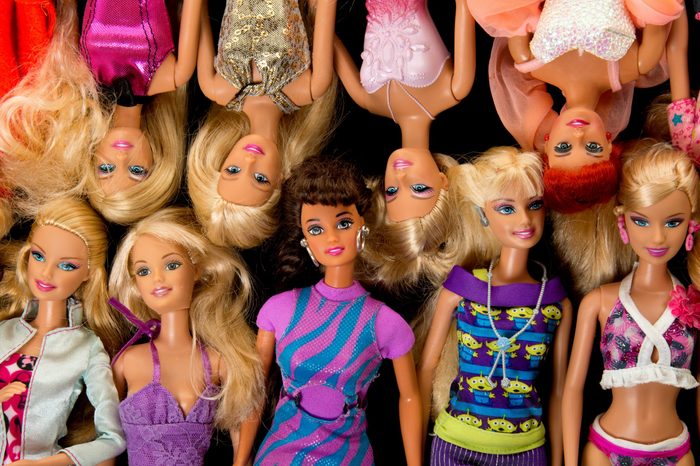 ivanastar/Getty Images
ivanastar/Getty Images
Scandal Barbie!
Not even Barbara is without her controversies; in fact, the iconic doll is rather well acquainted. Despite her all-American girl reputation, she's waded into some fairly murky waters over the past few decades. Here are just a few of the more significant ones.

Barbie's sex-doll origins
There's a simple reason Barbie has that impossibly tiny waist and large bosom: She was modeled after a "naughty" adult gag gift doll from Germany named Bild Lilli. Barbie's creator, Ruth Handler, brought several Bild Lilli dolls back to the U.S. after a 1956 family trip to Germany. "Lilli dolls could be bought in tobacco shops, bars and adult-themed toy stores," Robin Gerber, the author of Barbie and Ruth: The Story of the World's Most Famous Doll and the Woman Who Created Her told Time. "Men got Lilli dolls as gag gifts at bachelor parties, put them on their car dashboard, dangled them from the rearview mirror, or gave them to girlfriends as a suggestive keepsake."
In 1959, Barbie debuted at the American Toy Fair in New York City as a fashion doll for little girls. By 1963, feminists were protesting the improbably-curvy doll's body and sexualized origins. Find out more Barbie secrets—like her full name, and Ken's too.
 via Mattel
via Mattel
The doll who didn't like math
Back in 1992, a "Teen Talk" Barbie hit the shelves. Each doll was programmed to say a different handful of prerecorded phrases, such as "Do you have a crush on anyone?" "I'll always be here to help you," and—here comes the controversy—"Math class is tough!" (You can hear it for yourself here.) Needless to say, moms didn't go for it, and the American Association of University Women officially asked Mattel to fix it. According to theNew York Times, the president of the toy company at the time, Jill Barad, apologized saying, "In hindsight, the phrase 'math class is tough,' while correct for many students both male and female, should not have been included. We didn't fully consider the potentially negative implications of this phrase." Mattel didn't pull the "Teen Talk" doll from the shelves, but it did offer a swap for any customers who wanted to exchange theirs for another doll. Here are the 12 most expensive Barbie dolls ever made.
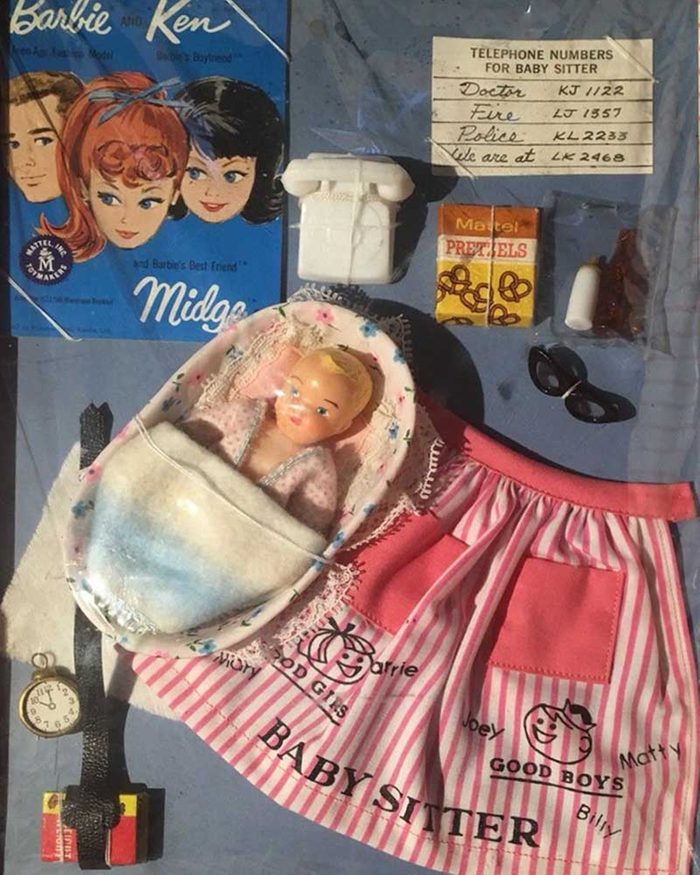 via Mattel
via Mattel
The "Don't Eat!" diet
Barbie had one of her more outrageous moments very early on, in 1963, when a teen-aged "babysitter" Barbie was sold with a tiny doll-sized diet book titled simply, "Don't Eat," according to Time magazine. Although the company insisted for decades that Barbie had no impact on girls' beliefs about their bodies, some research suggests otherwise. One 2006 study in the journal Developmental Psychology, for example, found that 5- to 8-year-old girls exposed to Barbie had less confidence in their own bodies and expressed a stronger desire to be thin than girls who didn't play with the doll. Today, the Barbie Fashionistas line offers several different skin tones and hair textures, plus four different body types: original, curvy, tall, and petite. Check out the vintage Barbie dolls that are worth a fortune today.
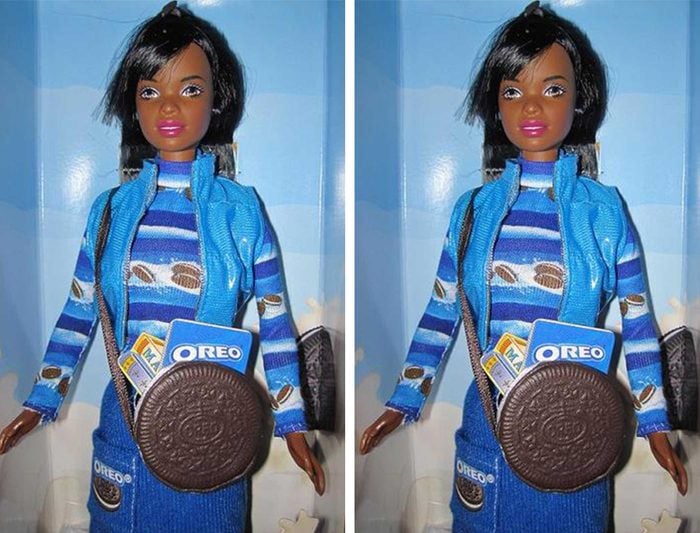 via Mattel
via Mattel
One crazy cookie
This may seem impossible, but believe us, it really, really happened: In 1997, the Mattel toy company released a cookie-themed "Oreo Fun" Barbie. Apparently, no one at Mattel was familiar with the racial slur "Oreo," and later that year, they released an African-American version, too, according to the Daily Beast.
"The cheerfulness of the black Oreo Fun Barbie, who was sold in packaging covered with pictures of Oreo cookies and whose dress was emblazoned with the word "Oreo," seemed to mock, chillingly, the predicament of…[a] person who is seen as black on the outside but white on the inside," writes American essayist Eula Biss in her book Notes from No Man's Land: American Essays. Unsurprisingly, the doll was quickly pulled from shelves.
 Erik Pendzich/REX/Shutterstock
Erik Pendzich/REX/Shutterstock
Giving-birth Barbie
Barbie has had many doll pals over the years, including sister Skipper, boyfriend Ken, and childhood friend Midge. In 2003, Mattel released a "Happy Family" version of Midge that was nine months pregnant and came complete with a removable "belly" cover and a little, plastic newborn curled up inside. Mattel said it was a great way for little girls to play-act the arrival of a new sibling—but moms said it was creepy. Walmart quickly pulled the toy off shelves, CBS reported. And Mattel later discontinued pregnant Midge in 2005. Check out 17 more things you never knew about Barbie dolls.
 via Mattel
via Mattel
Blond-weave Barbie
Barbie's Instagram is full of snapshots of her and her stylish friends doing things that any social media influencer would envy. But one pic of an African-American Barbie in a cute denim dress sparked a debate in the comments section, reported Allure. Why? She was sporting a half-up-half-down hairstyle with corn-row braids on one side, and a long, blond weave on the other. "Who's bright idea was it to style the AA Barbie's hair like that. You need to remove her and start from scratch IMMEDIATELY!!" wrote one follower. Another said, "the Black Barbie hairstyle is horrid."
But other fans came to the brand's defense pointing out that the half-up-half-down look is a hairstyle that some black women wear. "You act as if you have never seen a black woman wear their hair braided on the side with curls or weave on the other side. They didn't just pull this hairstyle out the sky," wrote one fan. The furor pretty quickly died down when others pointed out that Mattel has Black dolls with lots of different hairstyles and hair textures.
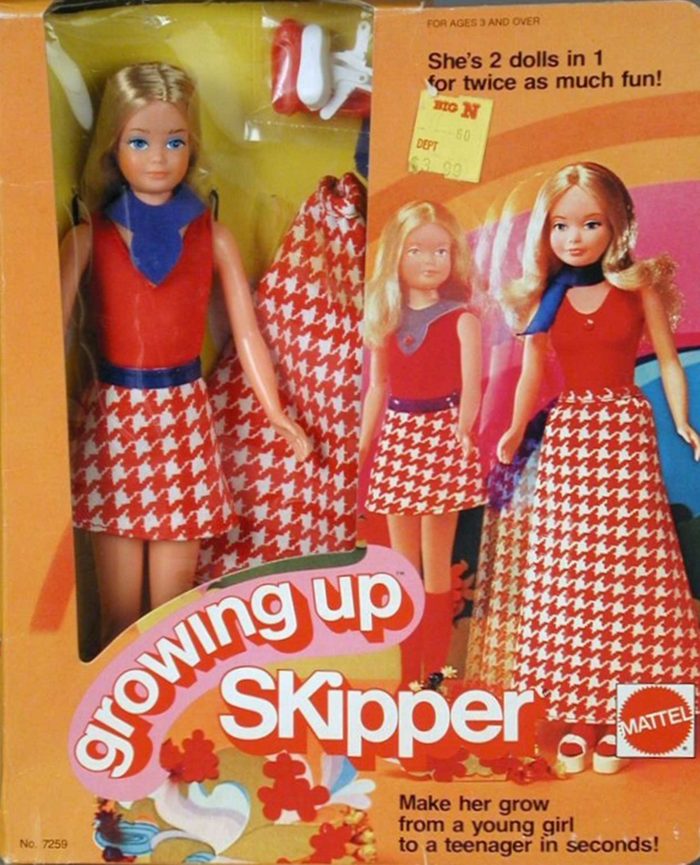 via Mattel
via Mattel
Puberty Barbie
Puberty isn't really a time of life anyone wants to remember—the awkwardness, the changing bodies, the hormones. But Mattel thought it in order to teach children about this time of life, Mattel created Growing Up Skipper in 1975. When you cranked one of her arms, she grew an inch or two and… here comes the controversial part… so did her chest. (Want to see the doll in action?) You can still find these vintage puberty dollies on eBay for around $80. Check out Barbies—and other childhood toys—that are now worth thousands.
 Invision/AP/REX/Shutterstock
Invision/AP/REX/Shutterstock
Hijab Barbie
Over the years, Mattel has partnered with dozens of well-known women—Cher, writer/director Ava duVernay, model Ashley Graham—to create Barbie dolls in their image. In 2016, the company announced a special-edition doll patterned after U.S. Olympic bronze-medalist fencer Ibtihaj Muhammad, complete with a headscarf known as a hijab. Most people accepted the doll with open arms, and a YouGov Omnibus poll found that 68 percent of Americans were either neutral about it or felt the doll was a "good thing."
But 18 percent thought the doll was a "bad thing." The Muslim headscarf "is misogyny under the guise of religion, nothing more," Maureen Callahan wrote in the New York Post, and shouldn't be celebrated in Barbie form. "In such fundamentalist religions, women have very few, if any, choices to make." As for Muhammad herself, she felt the new doll could "show children how to embrace what makes them different," according to NPR. Find out what Barbie looked like the year you were born.
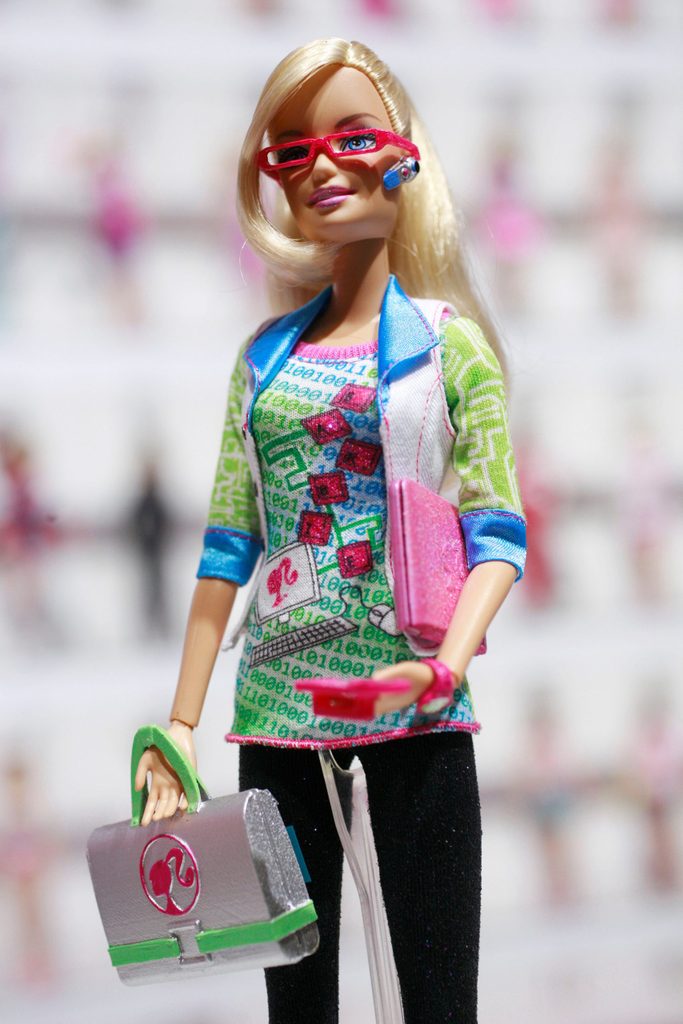 Mark Lennihan/AP/REX/Shutterstock
Mark Lennihan/AP/REX/Shutterstock
Computer virus Barbie
Mattel published a brightly colored sticker book, Barbie: I Can Be a Computer Engineer in 2010, but no one paid much attention until 2014, when Disney screenwriter Pamela Ribon came across the book and actually read it, reports NPR. Instead of Barbie coding her own video game and fixing a friend's laptop, she downloads a virus and relies on a couple of boys to do the actual tech work. ("'I'm only creating the design ideas,' Barbie says, laughing. 'I'll need Steven's and Brian's help to turn it into a real game.'") Later on, Barbie meets up with the boys and explains that she crashed Skipper's computer. Steven takes over and tells Barbie, "It will go faster if Brian and I help."
Pamela Ribon blogged about it and wound up on the morning shows, Barbie's big computer misstep went viral, and California computer scientist Kathleen Tuite launched an online app called Feminist Hacker Barbie that allowed users to re-write the book. Mattel apologized, and quickly pulled the book off shelves. You can't find it anywhere now, with the exception of one or two copies floating around eBay.
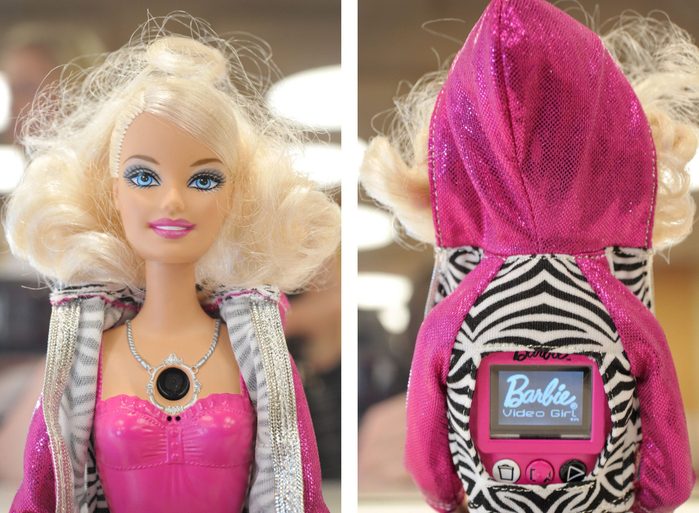 David Ebener/EPA/REX/Shutterstock
David Ebener/EPA/REX/Shutterstock
The FBI's least-wanted Barbie
Kids loved Mattel's 2010 "Video Girl Barbie"—a doll with a camera inside that could record 30 minutes of video and stream it to a computer. But the FBI wasn't so sure about her. A memo sent to law enforcement agencies around the country warned that the doll could be used to record pornography or other inappropriate material. Parents freaked when word of the memo leaked, reported NBC, but an FBI statement explained that "the alert's intent was to ensure law enforcement agencies were aware that the doll, like any other video-capable equipment, could contain evidence and to not disregard such an item during a search." And there were no reported incidents of illegal use, according to CBS.
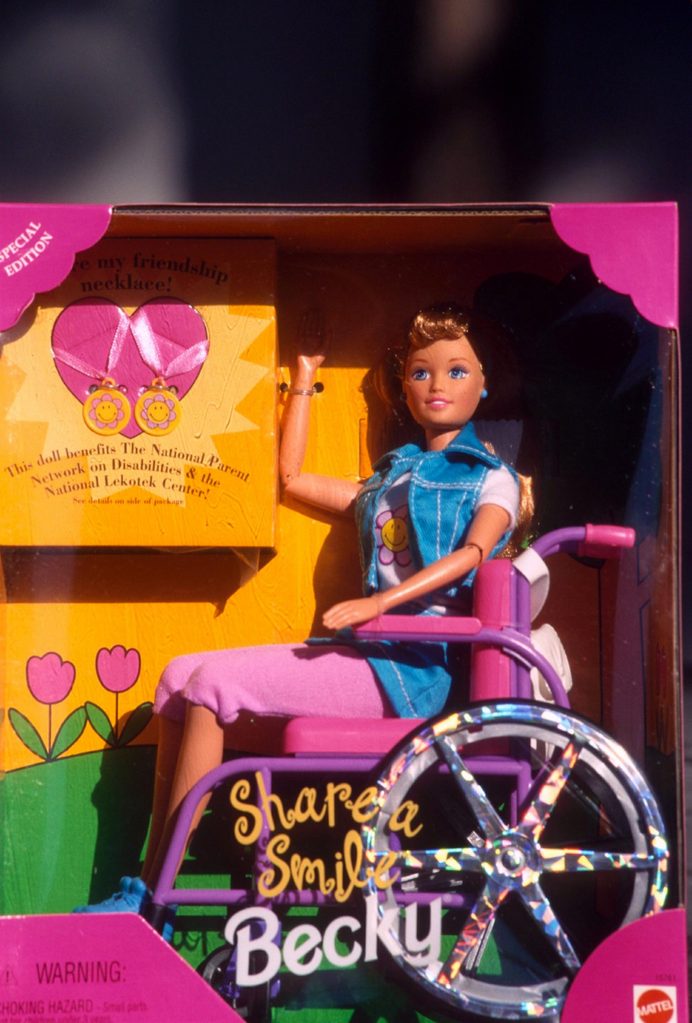 Peter Brooker/REX/Shutterstock
Peter Brooker/REX/Shutterstock
Barbie's non-ADA-accessible dream house
In 1997, Mattel came out with Share-a-Smile Becky, Barbie's first friend who used a wheelchair. But she couldn't fit through the door of Barbie's house—at least not the Barbie Dream House, reported the Washington Post. At the time, Mattel spokeswoman Lisa McKendall told the Post, "we are looking at the accessibility of all Barbie accessories."
But ten years later, she still couldn't roll into the Barbie Dream House, and Mattel decided to discontinue the doll. "A lot of the talk about why Becky doesn't exist anymore in any iteration is that it was too complicated to redesign Barbie world to fit Becky, so they just got rid of her," Karin Hitselberger, a blogger who has cerebral palsy and uses a wheelchair, told Public Radio International. Read on to find out the most popular toy the year you were born.
Originally Published: March 09, 2020
Sign up for articles sent right to your inbox
Enjoy the best stories, advice & jokes delivered right to your inbox!

Subscribe & SAVE Save Up To 84%!
Is Barbie Retro Garden Party Doll 11.5 Inches?
Source: https://www.rd.com/list/barbie-doll-controversies/
Posted by: perrywhearommens.blogspot.com

0 Response to "Is Barbie Retro Garden Party Doll 11.5 Inches?"
Post a Comment